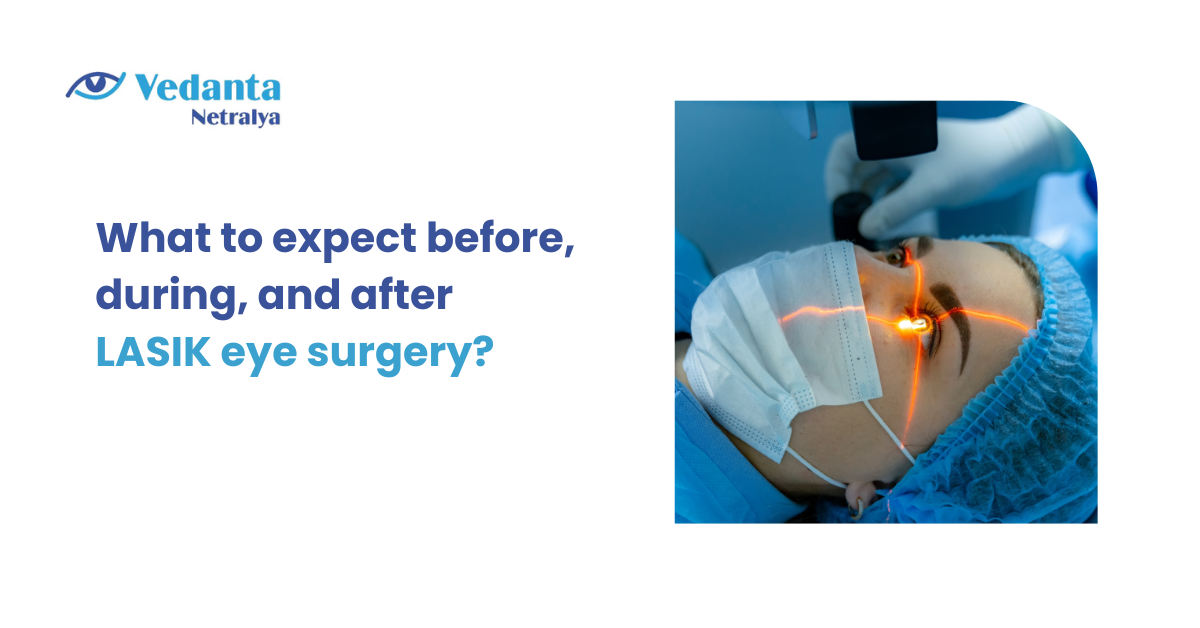
One of the most common elective procedures performed today is LASIK, a type of corrective laser eye surgery. In only one quick consultation, this quick, safe, and easy operation can significantly improve the quality of your vision. Patients who were once totally dependent on glasses or contact lenses to function on a daily basis frequently discover that they don’t need glasses anymore.
Nonetheless, many people find the idea of having surgery on their eyes to be a terrifying one. Yet, by being fully aware of what to anticipate, you may remain composed and in control while concentrating on the advantages of LASIK laser eye surgery.
What you need to know prior to, during, and following LASIK is listed here.
Prior To Having Lasik Surgery
LASIK is not necessarily the best option for everyone, despite having an extremely high success rate. You must go to a consultation visit with your preferred laser eye surgeon before you can be approved for LASIK. This is done to establish if you are a good candidate for the surgery by evaluating your eye health and present eyesight quality.
A corneal topography of your eyes will be taken by your surgeon to determine whether or not they are healthy enough and suited for LASIK. Your surgeon will be able to see exactly where the changes to the shape of your cornea need to be made thanks to this virtual map of your eyes.
Also, your surgeon will go over the advantages, disadvantages, and surgical alternatives with you. You should take advantage of this opportunity to ask any queries you might have.
You should be sure to cease using any facial creams, cosmetics, and perfume the day before your LASIK procedure since these could raise the risk of infection. After your surgery, you should make arrangements for someone to pick you up and drive you home because you won’t be able to because of your blurry vision.
During the LASIK treatment
Although the actual LASIK procedure should only take a few minutes per eye, you should plan your appointment to last about 30 minutes.
Ensure that you plan your procedure for a time when you won’t feel rushed or under pressure and can return home and unwind afterward.
You will be lying in a cozy chair during the procedure. Your eye will be inserted with numbing drops, and the region around it will be cleaned. Your eyelid will then be held open by a lid speculum so that your surgeon can reach your eye without interruption.
In order to perform LASIK, a flap is made in the epithelium, the cornea’s outermost layer. Depending on what your surgeon offers, this might be done using a tiny, thin blade or a laser.
The corneal tissue under the flap will then be reshaped using the laser and the topography recorded during your appointment. Although you could experience some tingling and hear the sound of the laser in action, the procedure should be absolutely painless. The surgery is finished by replacing the flap.
You will be given a shield to wear over your eyes after your LASIK procedure to avoid accidental touching or prodding while the flap heals.
After LASIK surgery
Once your LASIK treatment is over, you can take your go home. Since some soreness is to be expected, your surgeon may advise you to take some over-the-counter pain medication when you get home, but the majority of people manage without.
You must get plenty of sleep because your eye needs time to recover. Most surgeons will advise you to go home and take a nap for a few hours so that healing may start without interruption and you can avoid some of the first discomforts. To prevent unintentionally touching your eyes, wear your eye protection.
If you work in a position that necessitates great focus, such as staring at a computer screen, try to take a few days off from work so that you don’t need to put too much strain on your eyes immediately away. A few days later, your surgeon will want to check on you to make sure that healing is going well and there haven’t been any issues.
You should make an effort to see your surgeon as soon as you can if you have any problems following your LASIK operation.
Conclusion
At Vedanta Netralya our knowledgeable staff would be pleased to allay any concerns you may have if you are thinking about LASIK laser eye surgery and have additional questions about any element of the process. Call Vedanta Netralya at any time with questions or to make an appointment for a LASIK treatment in Ghaziabad.

